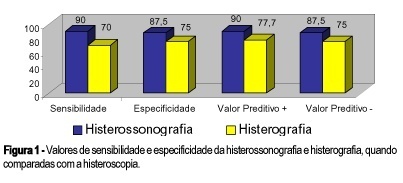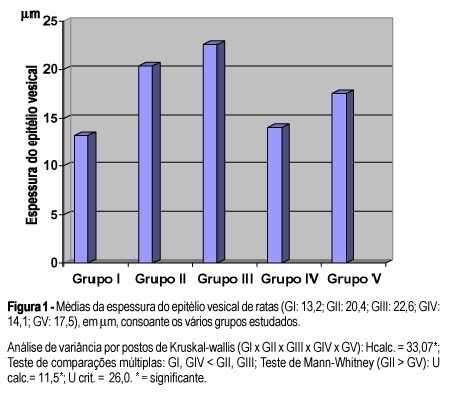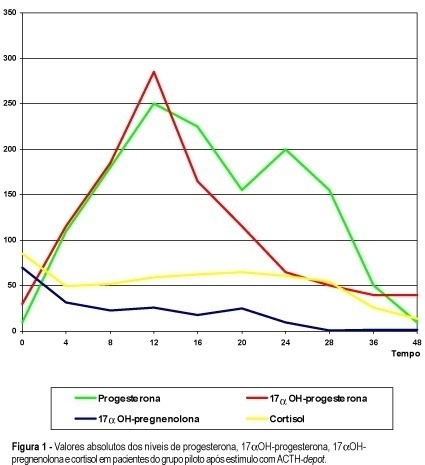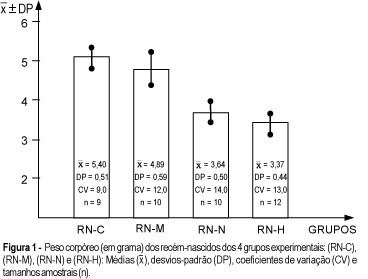Summary
Revista Brasileira de Ginecologia e Obstetrícia. 2000;22(10):627-632
DOI 10.1590/S0100-72032000001000005
Purpose: to investigate clinical and bacteriological aspects, follow-up and treatment of mastitis in our clinic. Methods: this study was performed at Cleriston Andrade General Hospital. Patients were interviewed regarding personal data, prenatal care, care received during delivery and puerperium and clinical aspects. Their mastitides were classified by Vinha's criteria. The patients with abscesses had them drained for bacteriological study. Culture medium Tryptone Soya Broth was used. Results: seventy nursing mothers were interviewed; 57% of them had given birth for the first time, 57% were between 20 and 29 years old, 51% had not finished elementary school, 63% had income less than the minimum wage, 66% of them had nobody to help with the housework. Out of the seventy females, 50% had not had their breasts examined. Approximately half of them had not been told how to breastfeed (50%) or how to express breast milk (58%). Sixty-three percent had not delivered in institutions designated by WHO as "Children's Friends Hospitals". Engorgement occurred in 46% of the cases and nipple fissures in 47%. According to Vinha's criteria, 44% had lobar, 39% ampular and 17% glandular locations. Presence of Staphylococcus aureus was detected in 55% of the cases. Conclusion: factors such as low schooling, low incomes, no assistance in housework, giving birth for the first time and lack of professional help contributed to occurrence of mastitis.

Summary
Revista Brasileira de Ginecologia e Obstetrícia. 2000;22(10):619-625
DOI 10.1590/S0100-72032000001000004
Purpose: to compare the methods used to investigate the endouterine cavity by testing the sensitivity and specificity of X-ray hysterography and sonohysterography compared with hysteroscopy (gold standard). Methods: we carried out a prospective study with 18 patients who, due to symptoms such as irregular menstrual cycles, unexplained postmenopausal uterine bleeding and ultrasound disturbance, were candidates for uterine cavity investigation by X-ray hysterography, sonohysterography and hysteroscopy. Results: sonohysterography sensitivity and specificity were 90 and 87.5%, respectively. Positive and negative predictive values were 90 and 87.5%. For X-ray hysterography, sensitivity, specificity, positive and negative predictive values were 70, 75, 77.7 and 75%, respectively. Conclusion: the use of saline instilation into the endometrial cavity in order to enhance the acuracy of the vaginal ultrasonography seems reliable as a mean to distinguish lesions in the uterine cavity, thereby facilitating the identification of candidates for diagnostic or operative hysteroscopy. X-ray hysterography produces results inferior to hysterosonography.

Summary
Revista Brasileira de Ginecologia e Obstetrícia. 2000;22(10):615-618
DOI 10.1590/S0100-72032000001000003
SUMMARY Purpose: to evaluate the videolaparoscopic surgical mana-gement of 32 patients with ovarian endometrioma. Method: retrospective study of thirty-two patients admitted to the Gynecologic Endoscopy Section - Gynecology and Obstetrics Department of the Hospital do Servidor Público Estadual "Francisco Morato de Oliveira" - São Paulo - Brazil with clinical and ultrasonographic diagnosis of ovarian endometrioma, who have been submitted to videolaparoscopic surgery. Eleven of them had endometriomas less than 3 cm and had the tumor emptied and the capsule excised at the first laparoscopy. Twenty-one patients with endometriomas larger than 3 cm were submitted to emptying and washing of the cyst at the first laparoscopy. These women used GnRH analogues for four months (1 dose each month) and were then submitted to a second laparoscopy when the capsule was excised. Histopathologic study was performed in the surgical tissues of all cases. The early results of the procedure and the recurrence rate were evaluated. Results: there were no surgical intercurrent episodes or postsurgical complications. The problem was solved in all but three patients among the 21 with endometriomas larger than 3 cm. These patients presented recurrence of the disease within a period of 6 to 12 months. Conclusion: the videolaparoscopic surgical management of ovarian endometriomas, with capsule excision, showed good results and small number of recurrences.
Summary
Revista Brasileira de Ginecologia e Obstetrícia. 2000;22(10):609-613
DOI 10.1590/S0100-72032000001000002
Purpose: the effects of corticosteroids on the female urinary tract are not well understood, specially in climacteric women with or without estrogen replacement therapy. We studied the effects of corticosteroids on the blood vessels and epithelium of the bladder and urethra of female rats. Method: fifty-four female rats were used, divided into five groups. Group I - ten castrated female rats; Group II - eleven castrated female rats which receivedintraperitoneally 15 mg/kg weight prednisolone, for 26 days; Group III - twelve castrated female rats which received the same amount of corticosteroid, during the same time, and subcutaneously 10 mg/kg 17 beta-estradiol, in the last five days before they were sacrificed; Group IV - eleven castrated rats which received placebo for 26 days; and Group V - no castrated female rats which received the same dose of corticosteroid during the same time as in Group II. Results: we observed an average of 1.8 vessels in the bladder of the castrated group which received corticosteroid, a similar number to that of those which received corticosteroid and estrogen, compared with 0.8 vessel in the placebo group. Regarding the urethra, 0.7 vessel was observed in the group which received corticosteroid, as compared with 0.9 vessel in the group treated with corticosteroid associated with estrogen and 0.4 in the placebo group. Regarding the mucous membrane, the vesical epithelium thickness of 14.1 mm in the placebo group increased to 20.6 mm in that with corticosteroid and to 22.6 mm in that with corticosteroid plus estrogen. The urethral epithelium thickness of 12.4 mm in the placebo group increased to 15.1 mm in the group with corticosteroid and to 16.7 mm in that with corticosteroid plus estrogen. Conclusion: corticosteroids significantly increased the vascularization and the thickness of the vesical and urethral epithelia of castrated female rats.

Summary
Revista Brasileira de Ginecologia e Obstetrícia. 2000;22(9):585-591
DOI 10.1590/S0100-72032000000900008
Purpose: to test the adrenal function by a potent stimulus to its reticular layer verifying 3beta-hydroxysteroid dehy-drogenase (3beta-HSD) and 21-hydroxylase (21OH) enzymatic activities. Methods: plasma concentrations of 17alphaOH-pregneno-lone, 17alphaOH-progesterone, cortisol, progesterone, androstenedione, dehydroepiandrosterone (DHEA), dehydroepiandrosterone sulfate (SDHEA) and free testosterone were determined in 39 women, 13 of whom were normal (2 of them used in a pilot study) and 26 had idiopathic hirsutism, 0, 12 and 24 h after injection of ACTH-depot. Results: among hirsute women, we identified different responses that could diagnose any blockage in the steroid pathways leading to the diagnosis of a mild/moderate decreased adrenal function. The 17alphaOH-pregnenolone concentrations varied from 2.0 to 24.6 ng/mL, cortisol values increased from 2.1 to 45.3 and 38.4 mug/dL, 17alphaOH-progesterone levels varied from 50.7 to 346 and 218 ng/mL and progesterone increased from 0.3 to 4.4 and 2.2 ng/mL. Among the reticular layer hormones a rise of SDHEA from 274.7 to 495.5 and 505.8 mg/dL, and of androsterone from 1.1 to 4.0 and 4.5 ng/mL was observed, the levels of free testosterone increased from 1.3 to 1.8 and 2.7 pg/mL and the DHEA levels from 2.4 to 4.7 and 8.5 ng/mL. One patient showed 3beta-HSD deficiency and two others a possible 21OH deficiency. Conclusions: these findings suggest that the ACTH-depot test could be used to exclude the adrenal gland as the possible source of hyperandrogenism in women with idiopathic hirsutism.

Summary
Revista Brasileira de Ginecologia e Obstetrícia. 2000;22(9):573-577
DOI 10.1590/S0100-72032000000900006
Purpose: to verify the frequency of cervical intraepithelial neoplasia in human immunodeficiency virus (HIV) ¾ infected women. Methods: ninety-nine HIV-seropositive women were studied. The diagnosis of the HIV infection was established through two ELISA tests complemented by Western blot test or indirect immunofluorescence test. As control group, 104 women whose ELISA test was not positive were analyzed. The investigation of cervical intraepithelial neoplasia was achieved by association of Pap smear and colposcopy in both groups. In the cases where colposcopy revealed existence of abnormal transformation zones, NIC diagnosis was obtained through colposcopy-guided biopsy complemented or not by conization. Results: cervical intraepithelial neoplasia was found in 15 of the 99 patients (15.2%), and among them there were ten NIC I, one NIC II and four NIC III. Among the 104 women of the control group, four presented cervical intraepithelial neoplasia (3.8%), one being NIC I and three NIC III. Conclusion: the comparative analysis of the results showed that the frequency of cervical intraepithelial neoplasia was significantly higher among those patients infected with HIV.
Summary
Revista Brasileira de Ginecologia e Obstetrícia. 2000;22(9):567-572
DOI 10.1590/S0100-72032000000900005
Purpose: to study the repercussion of arterial hypertension regarding body weight gain and body length, as well as liver and brain weight of offspring. Methods: a total of 82 animals in reproductive age were used. They were randomly assigned to 4 different groups (control, handled, nephrectomized and hypertensive). Renal hypertension was produced by a controlled constriction of the main left renal artery and contralateral nephrectomy, according to the technique described by Goldblatt (Goldblatt I: one kidney - one clip hypertension). Afterwards, they were distributed among nonpregnant and pregnant groups. The following newborn groups resulted from the pregnant groups: RN-C (control-newborn group of pregnant rats without surgical treatment), RN-M (manipulation-newborn group of the pregnant rats with surgical manipulation), RN-N (nephrectomized-newborn group of pregnant rats with nephrectomy) and Rn-H (hypertensive-newborn group of pregnant rats with hypertension). Results: the RN-N and RN-H groups showed body weight gain ( = 3,64 ± 0,50;
= 3,64 ± 0,50;  or = 3,37 ± 0,44), body length (
or = 3,37 ± 0,44), body length ( = 3,89 ± 0,36;
= 3,89 ± 0,36;  or = 3,68 ± 0,32) and brain weight (
or = 3,68 ± 0,32) and brain weight ( = 0,16 ± 0,01;
= 0,16 ± 0,01;  or = 0,16 ± 0,05), respectively, smaller than the control group (
or = 0,16 ± 0,05), respectively, smaller than the control group ( = 5,40 ± 0,51;
= 5,40 ± 0,51;  or = 4,95 ± 0,23 and
or = 4,95 ± 0,23 and  or = 0,22 ± 0,04, respectively). In addition, the RN-H group showed the lowest liver weight (
or = 0,22 ± 0,04, respectively). In addition, the RN-H group showed the lowest liver weight ( = 0,22 ± 0,03) compared with the other three groups. Conclusion: after statistical analysis, the results obtained showed that the arterial hypertension determined a reduction in body weight, body length, and liver and brain weight of the offspring.
= 0,22 ± 0,03) compared with the other three groups. Conclusion: after statistical analysis, the results obtained showed that the arterial hypertension determined a reduction in body weight, body length, and liver and brain weight of the offspring.

Summary
Revista Brasileira de Ginecologia e Obstetrícia. 2000;22(9):557-566
DOI 10.1590/S0100-72032000000900004
Purpose: to study the fetal well-being assessment in pregnancies complicated by diabetes, and to analyze the neonatal results. Methods: we studied 387 pregnant women with diabetes at the Fetal Surveillance Unit. The last examination (cardiotocography, fetal biophysical profile, amniotic fluid index and dopplervelocimetry) was correlated with the neonatal outcome. Results: the studied population included 46 (12%) type I diabetes, 45 (12%) type II and 296 (76%) gestational diabetes. Type I diabetes with abnormal or suspected cardiotocography was related to abnormal 1st minute Apgar (50 and 75%, p<0.05) and to the need for neonatal intensive care unit (50 and 75%, p<0.05). The abnormal biophysical profile in type II diabetic pregnancy was related to the need for neonatal intensive care (67%, p<0.05), and abnormal umbilical artery Doppler study was related to abnormal 1st minute Apgar (67%, p<0.05). Gestational diabetes with abnormal cardiotocography presented 36% abnormal 1st minute Apgar (p<0.05), 18% abnormal 5th minute Apgar (p<0.01) and 18% neonatal death (p<0.01). Abnormal amniotic fluid index was related to abnormal 5th minute Apgar (p<0.05) and need for neonatal intensive care unit (p<0.05). Gestational diabetes with abnormal umbilical artery Doppler was related (p<0.05) to: abnormal 1st and 5th minute Apgar, respectively, 25 and 8%, Need for neonatal intensive care in 17% and neonatal death in 8%. Conclusions: the fetal well-being examinations correlated with adverse perinatal outcome, showing the need for fetal surveillance in diabetic pregnant women.